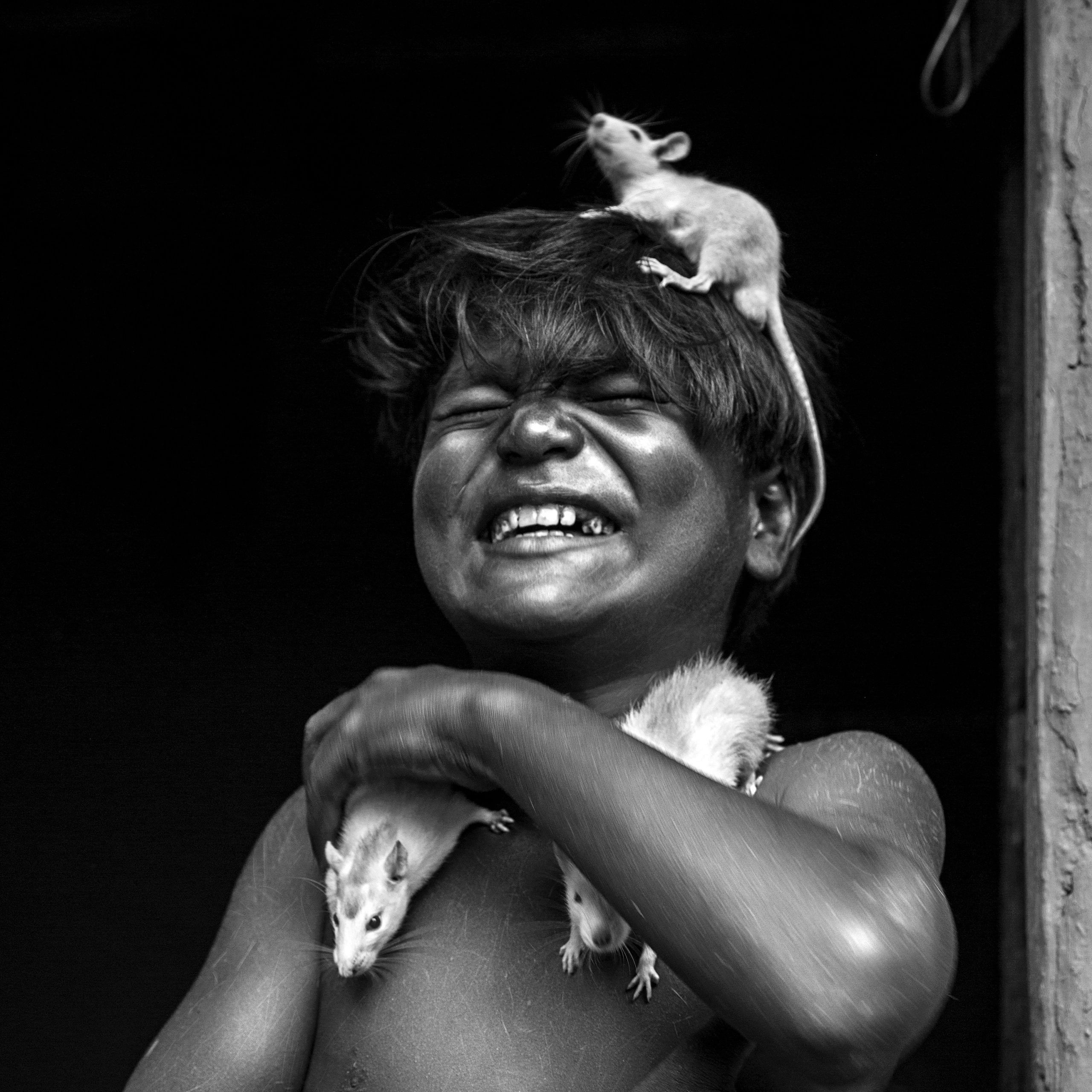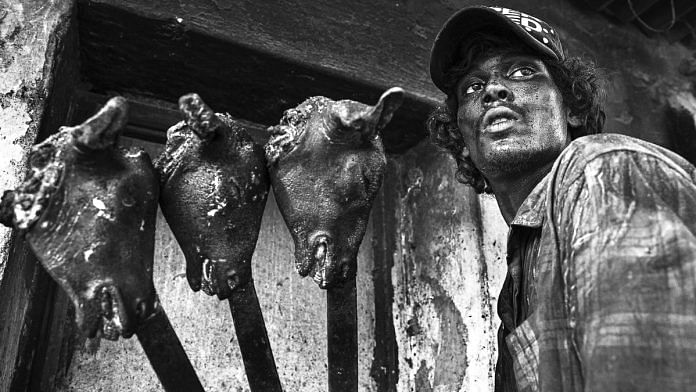New Delhi: The photographs are all black and white, stark renderings of practices that are easier to ignore. Goat-heads are suspended on sticks, as a Holeya Dalit extracts the most lucrative organ, the brain. “Their hands are calloused,” and “their faces are permanently charred” reads the description. It’s a sombre scene, and it’s as if the viewer needs to be told that it is.
The brutally stark images of Dalit lives appear dismembered from their context and conversations. But for Bengaluru-based photographer Asha Thadani, this was deliberate.
“The subject is stark, and there is isolation. The photographs don’t have context, they’ve been isolated from context,” Thadani said.
She started photographing Dalit communities in 2016, living with them for days on end, absorbing customs and traditions that are, for the most part, unpalatable to the unacquainted—and the upper-caste. These photographs are now on display in Delhi, part of an exhibition titled ‘Broken’ at the India Habitat Centre on Lodhi Road.
This singularity, this bareness is brought out through the grey tones. But it was also a conceptual decision by Thadani, who has been photographing for almost three decades. For one, what she was clicking was more often than not set in shades of grey. Smoke from the Jharia coal mines, colourless water, and the tattoos etched on the bodies of the Ramnamis. Not only was it conceptual, it was also an aesthetic call. “The community has to look cohesive. There’s a homogeneous feel to the photographs,” she said.

For Thadani, it was almost pre-ordained. Much of her career has been spent photographing marginalised communities, and this was the next step. Her last exhibition, showcased in Mumbai, was a dissection of man-animal conflicts. “I’ve always explored power-structures and hierarchies,” she said.
There are 10 Dalit communities whose lives are up for examination in the atrium of the India Habitat Centre. They traverse various corners of the nation—the joginis from Andhra Pradesh, the Rammanis from Chhattisgarh, and the Theyyams from Kerala. Their practices differ, but according to Thadani, they are united in their “shared trauma” and the brush of “prejudice” sweeps through them all.
The exhibition is also supposed to act as an insulator from the structures that govern Dalit perceptions—there’s no room for politicisation or for appropriation. “Whether you’re from the left or the right, you should know the situation is completely unacceptable,” Thadani told ThePrint.
This kind of abstraction in photography—once a popular genre in magazines like National Geographic—has of late come under increasing scrutiny for its aerial, uninvolved gaze. The depoliticised aesthetics is often viewed as a privilege vantage that only a few can afford.

‘No right to be moralistic’
According to Thadani, people who visited the exhibition were shocked—some didn’t even know that caste system existed in India. Since she was catering to an ignorant audience, she needed to make the photographs “heroic”. People couldn’t walk out feeling disgusted, even if some of the practices weren’t to their taste.
“I didn’t want people to view the exhibition through our moral lens,” she said. “How do we have the right to be moralistic?”
Thadani was referring to her retelling of the Musahars, a Dalit community in Eastern Bihar who catch and eat rats. She consciously decided not to showcase photographs of them cooking or eating rats, in an attempt to not contribute to the ‘othering’. Instead, there’s a photograph of a young boy, laughing as rats crawl over him, and trying to hold on to one. It’s one of the exhibition’s few ‘normal’ moments—unaffected by the heaviness that looms through the exhibition.
For Thadani, the stories represented are from “the human angle”. There is no mention of the word ‘Brahmin’. Nor is there any mention of Ambedkar, except in the case of a set of portraits on Buddhist Dalits. “Everyone wants to appropriate [their stories] and not do anything. I wanted to showcase them as people,” she said.
(Edited by Prashant)



